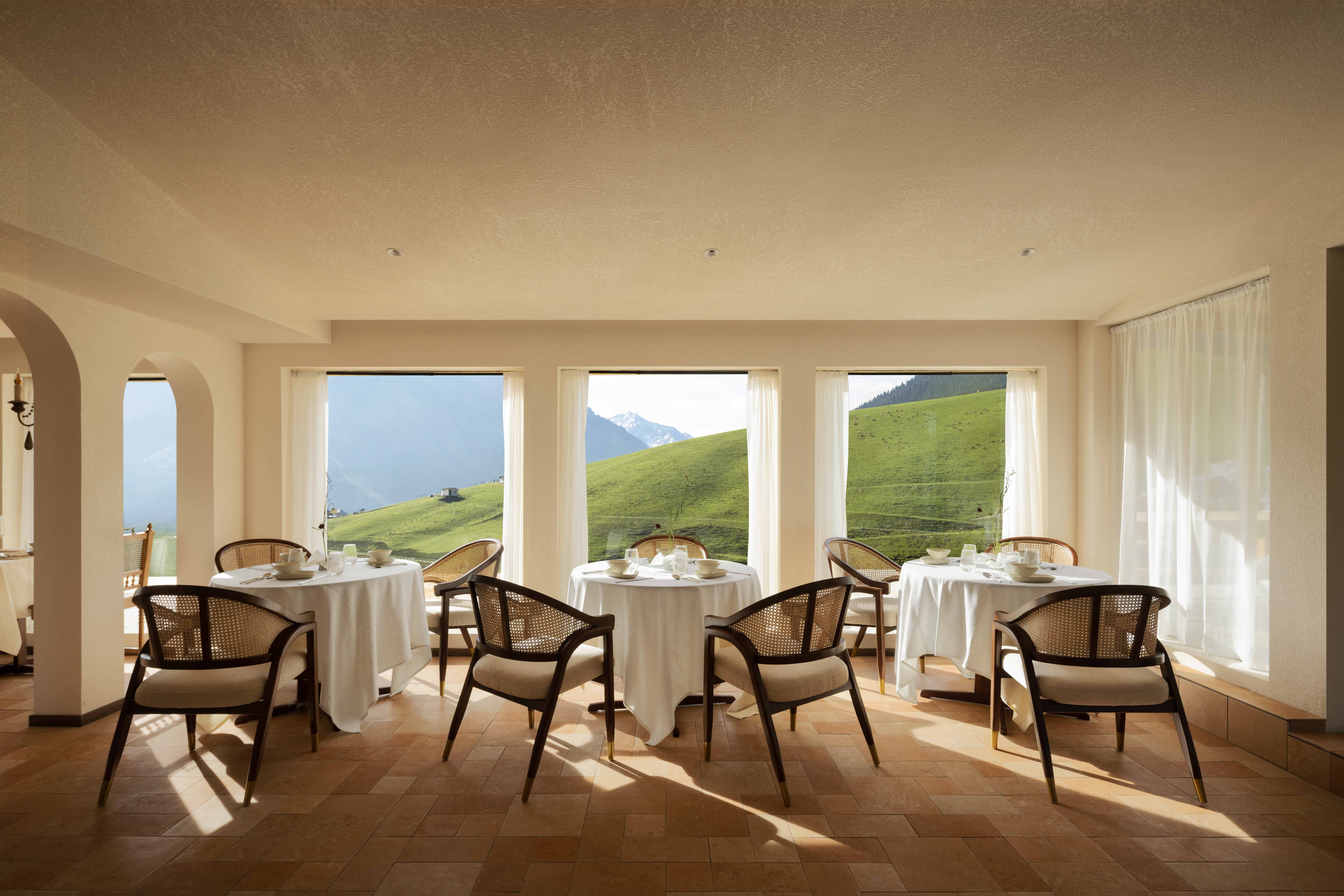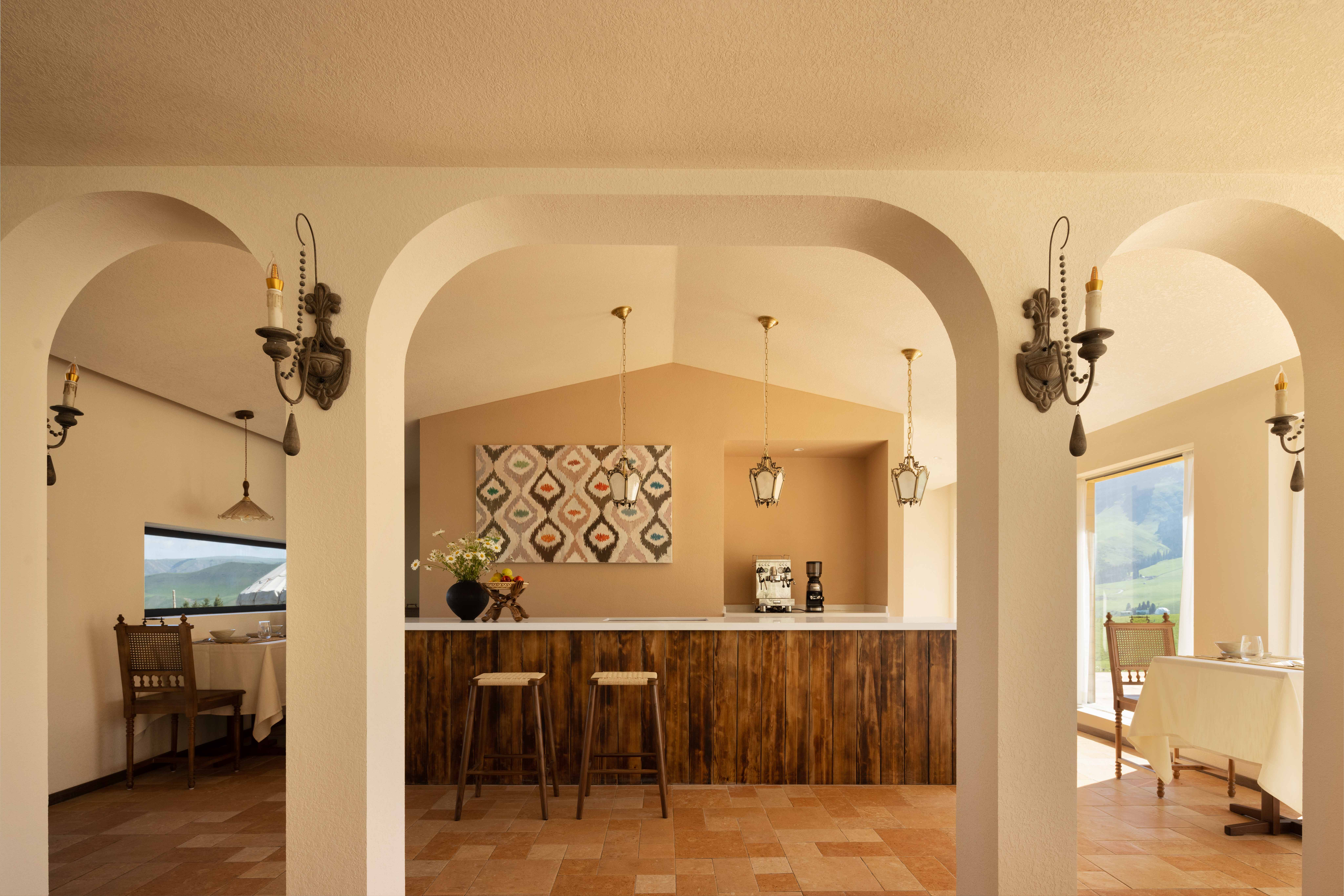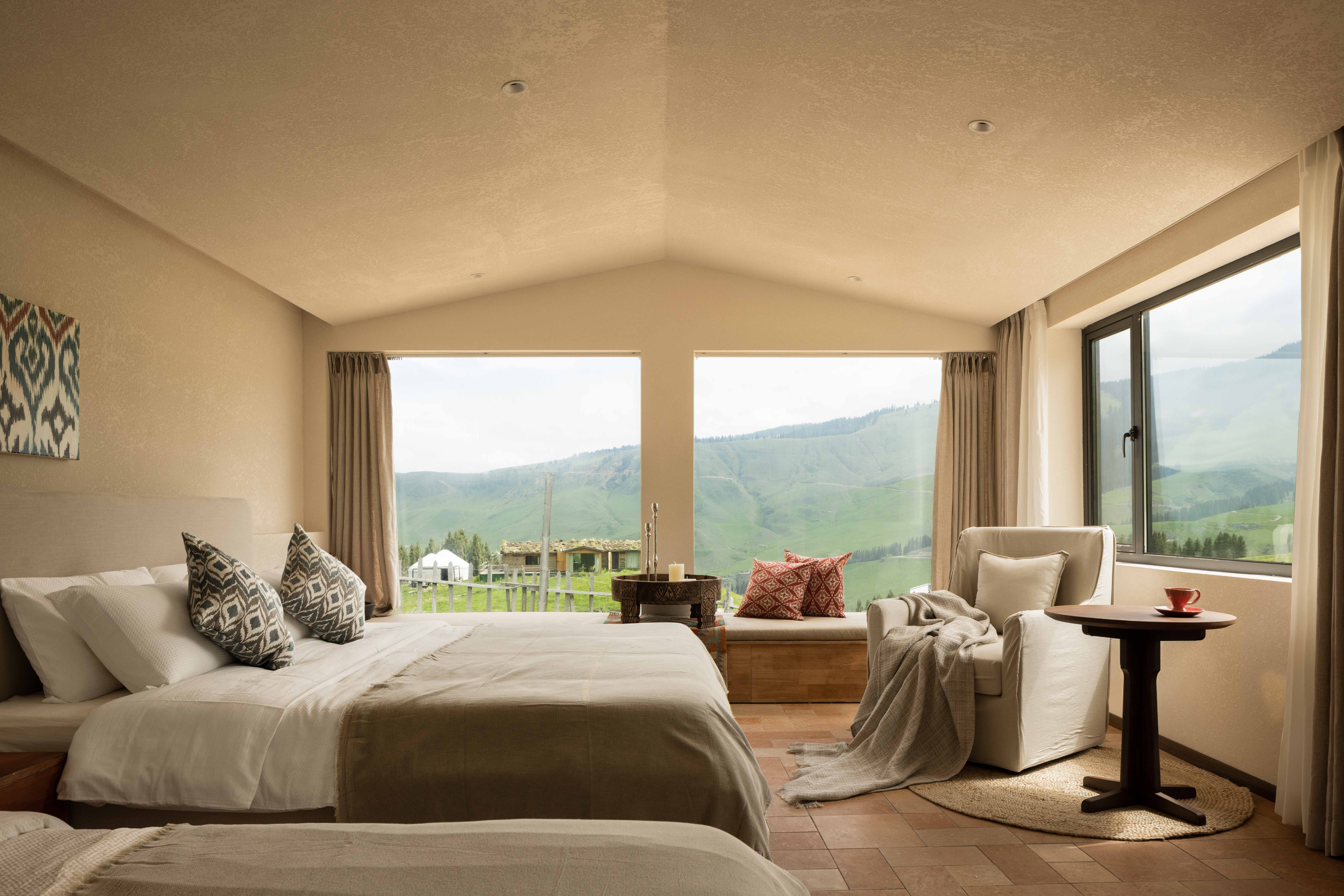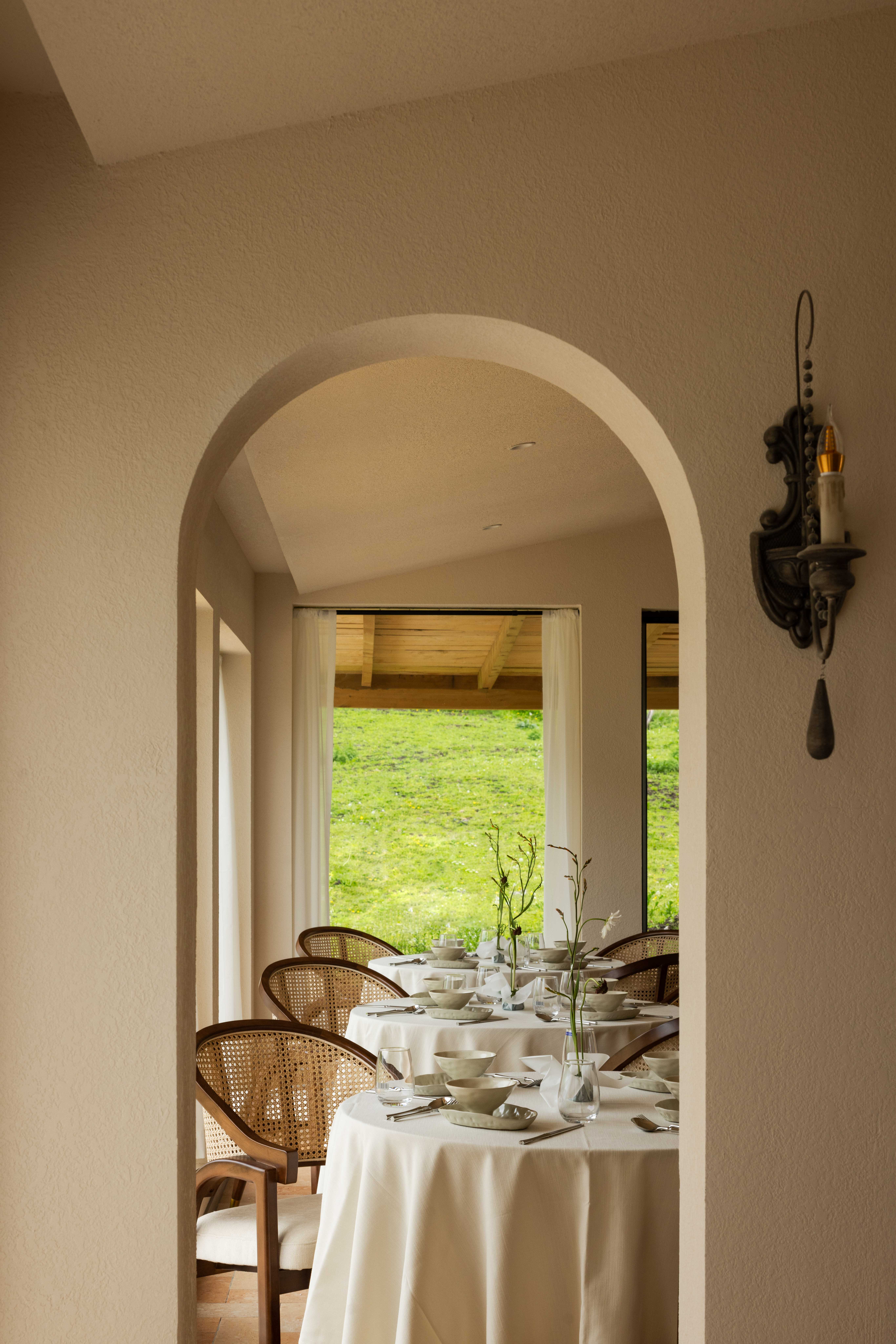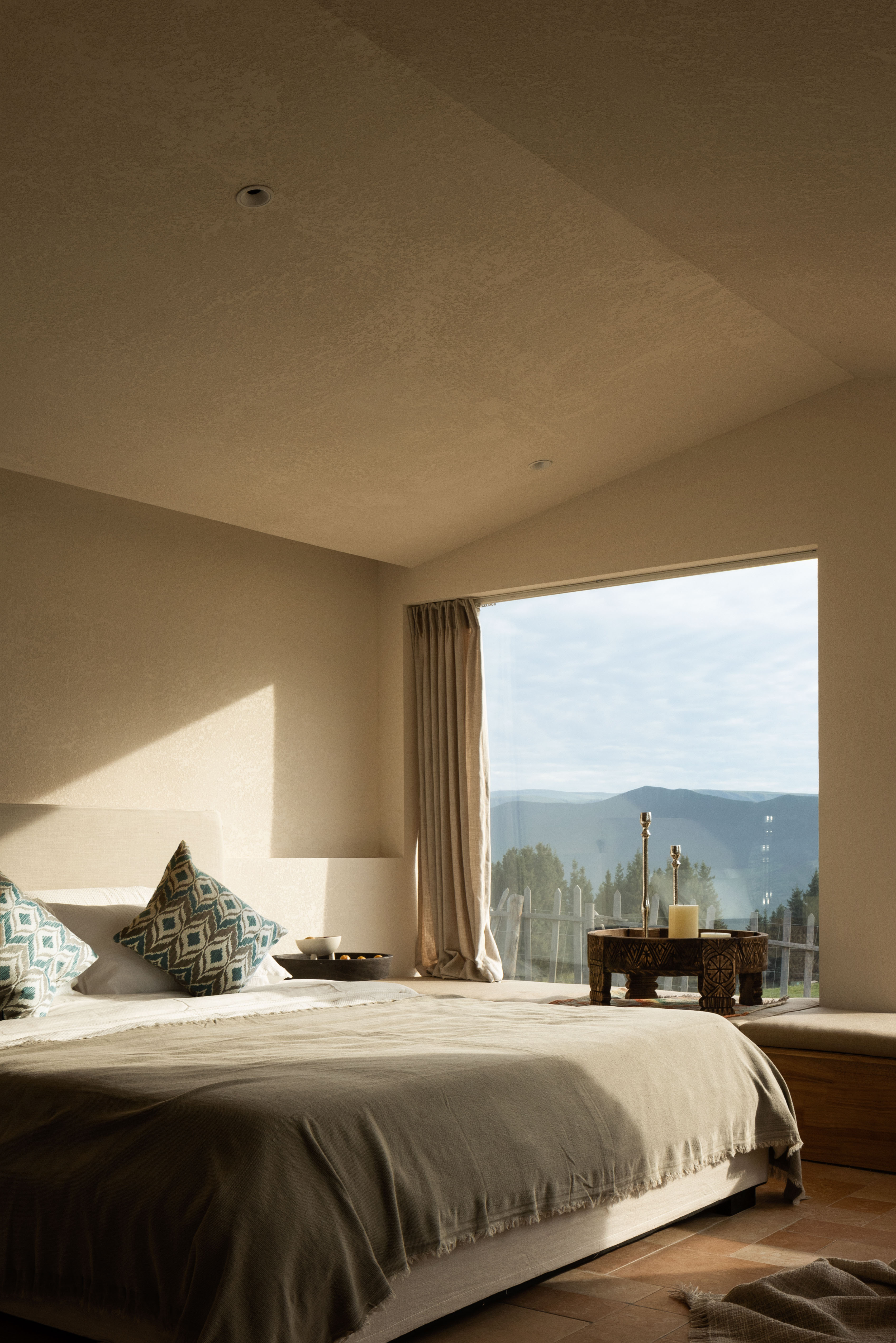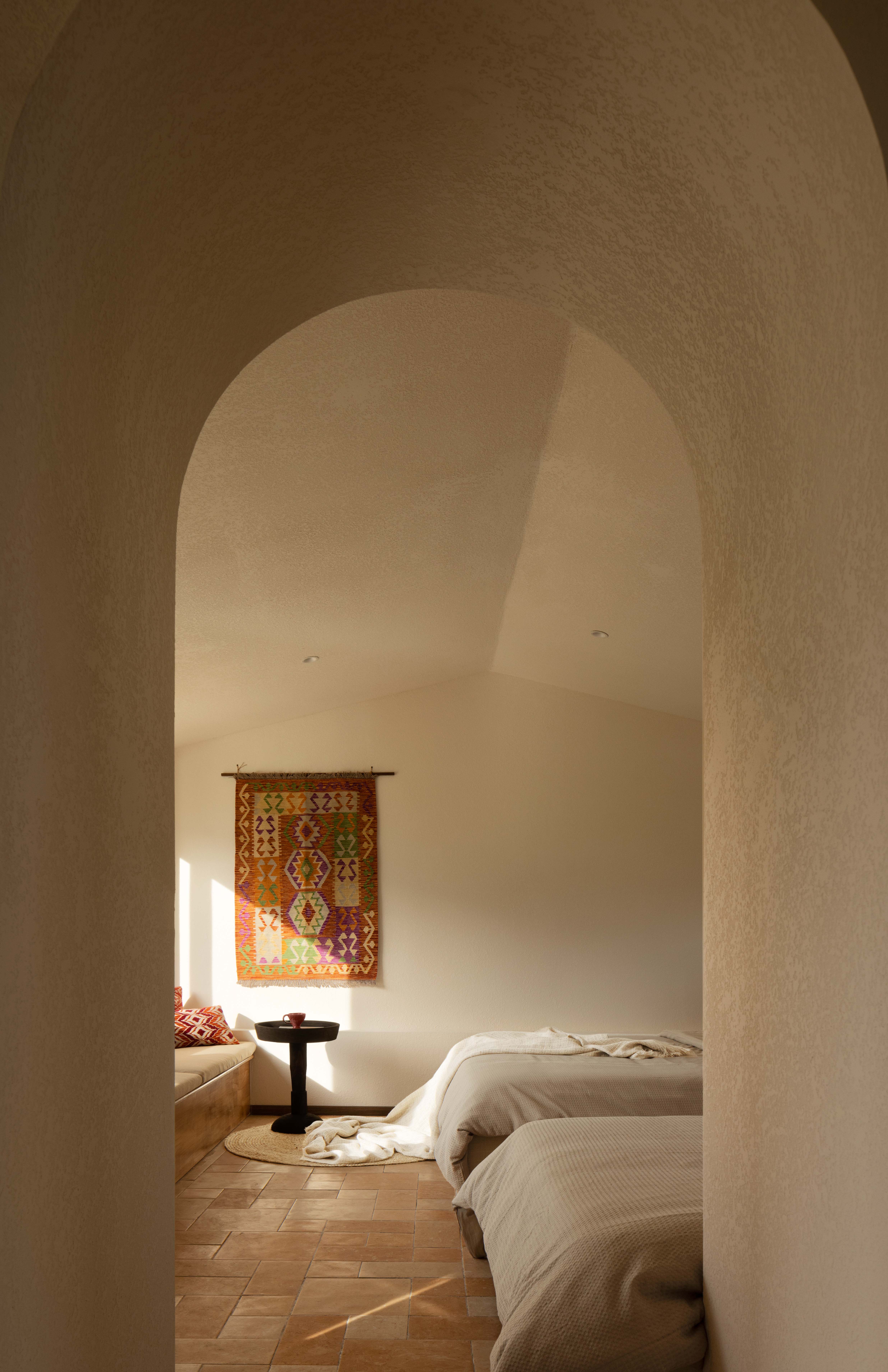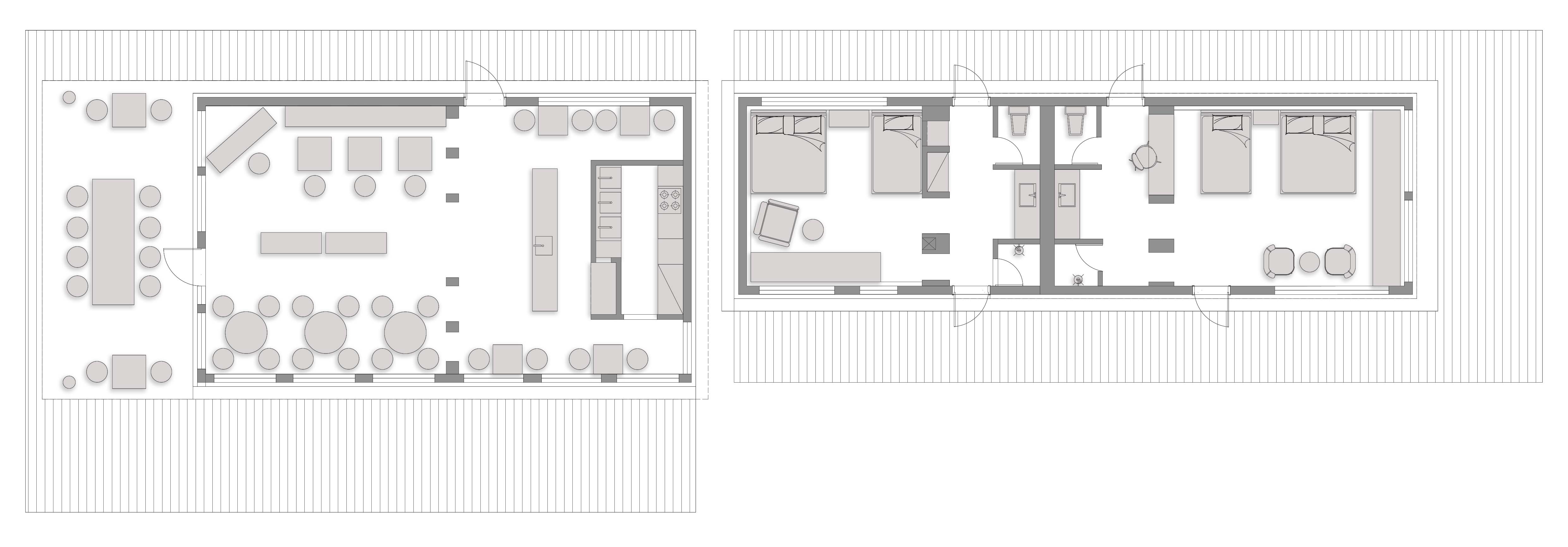Linshan Hotel 岭杉民宿
岭杉民宿位于新疆伊犁特克斯县琼库什台村,这个哈萨克自然村是伊犁河谷保存完好的木构建筑群,保留着哈萨克族群历代沿革的历史印记。
2023年,岭杉民宿二期项目启动,设计师将业态规划为“民宿+餐饮/下午茶”的结构,把餐厅消费人群扩大到琼库什台的全部游客。鉴于岭杉一期室内的现代侘寂风格,为了保持民宿形象的完整性,岭杉二期的客房在延续一期风格基础上,设计师力图将其呈现出更多质感和松弛感。
5米* 7米的木屋,包覆原有木柱后形成的宽度不足2米、长度4.5米的空间,成为了房间的服务性空间,干湿完全分离的淋浴、马桶和盥洗台,为住客提供了便利。同时,包覆的木柱形成了造型隔断,为不到30㎡的客房增加了层次感,为服务性空间提供了遮挡和屏障,同时也兼顾了拍照打卡的需求,提升客人的入住期待与情绪体验。有限的空间,全部向风景展开,端头的大落地窗,与岭杉一期遥遥相望。
“旅宿”之上,设计师赋予岭杉二期更多的“民宿”属性,从结构、设施、空间尺度到软装选型,都充分考虑了长时体验的需求。舒服的床、枕头,适合长坐的沙发,方便的、可以随时搁水杯的边几,一个正常高度、可以坐下来看看书的桌子,合理收纳保证民宿的整洁,这些都是提升民宿长时体验不可或缺的部分。
经过对琼库什台在地文化的长期持续研究,设计师尝试将本地特色与泛新疆文化适度结合,让入住民宿的客人,既能找到独特的琼库什台印迹,也能感受到更为广泛与通识性的西域民族风情。马背上的哈萨克族,从居住、饮食,到服饰、节日,甚至生活哲学,都有其特有的文化特点。设计团队亲手绘制的挂画,将新疆艾德莱斯的纹样进行了转译和色彩的重新编辑。富有生命力的手绘痕迹,带给空间更多鲜活的温度。无论是手绘的艾德莱斯纹样,还是从南疆喀什寻来的地毯和摆件,这些泛新疆文化的纹样与符号,通过绘画、装饰品的方式融入到空间内,成为真实的民族元素表达。
Linshan Hotel is located in Qiongkushitai Village, Tekes County, Yili, Xinjiang. It is a Kazakh natural village,well-preserved wooden building complex in the Yili River Valley, which retains the historical imprint of the evolution of the Kazakh ethnic group.
In 2023, the second phase of Lingshan Hotel project was launched, the designer planned the business format as a "hotel + catering/afternoon tea" structure, expanding the restaurant consumer group to all tourists in Qiongkushitai.In view of the modern wabi-sabi style of the interior of Lingshan Phase I, in order to maintain the integrity of the image , the guest rooms of Lingshan Phase II continue the style of Phase I, and the designer strives to present it with more texture and relaxation.
A 5m*7m wooden house, the space with a width of less than 2 meters and a length of 4.5 meters formed by covering the original wooden columns has become the service space of the room. The shower, toilet and washbasin with completely separated dry and wet areas provide convenience for the guests.At the same time, the covered wooden columns form a shaped partition, which adds a sense of hierarchy to the guest rooms of less than 30 square meters, provides shelter and barriers for the service space, and also takes into account the needs of taking photos and checking in, enhancing the guests' expectations and emotional experience of staying.The limited space is all open to the scenery, and the large floor-to-ceiling windows at the end are far away from Lingshan Phase I.
In addition to "travel and accommodation", the designer gave Lingshan Phase II more "homestay" attributes, and fully considered the needs of long-time experience from structure, facilities, space scale to soft furnishing selection.Comfortable beds and pillows, sofas suitable for long-time sitting, convenient side tables where you can put water cups at any time, a table of normal height where you can sit down and read books, and reasonable storage to ensure the cleanliness of the homestay are all indispensable parts of improving the long-time experience of homestays.
After long-term and continuous research on the local culture of Qiongkushitai, the designer tried to moderately combine local characteristics with Xinjiang culture, so that guests staying in the homestay can not only find the unique Qiongkushitai imprint, but also feel the more extensive and common Western ethnic customs.The Kazakhs on horseback have their own unique cultural characteristics from living, eating, to clothing, festivals, and even life philosophy. The hanging paintings drawn by the design team translated the patterns of Xinjiang Idles and re-edited the colors. The vibrant hand-painted traces bring more fresh warmth to the space.Whether it is the hand-painted Idles pattern, or the carpets and ornaments found in Kashgar in southern Xinjiang, these patterns and symbols of pan-Xinjiang culture are integrated into the space through paintings and decorations, becoming a true expression of ethnic elements.



